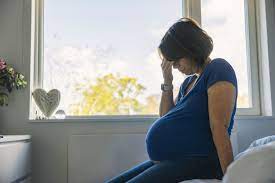Socio-cultural and Gender Impacts on Resilience Access to and Utilization of Contraceptives Service during Covid-19 Pandemic by Women of Reproductive Age in Oyo State, Nigeria

Abstract:
Cultural and gender factors are a major
obstacles to informed discussions about sexual and reproductive health issues, particularly
regarding contraception. This paper presents the findings of a cross-sectional quantitative
study exploring socio-cultural and gender impacts on resilience access to and utilization
of contraceptives service during the Covid-19 Pandemic by women of reproductive
age in Oyo state, Nigeria. A purposive sampling technique was used to select 471
users of Maternal New-borne and Child Health (MNCH) services such as postnatal and
family planning that responded to 43 structured questionnaires that included socio-demographical
characteristics, access, and utilization, socio-cultural and gender factors amidst
Covid-19 pandemics. Of the 471 respondents, the mean age
of respondents was 29.63± 3.29years, with (34.2%) within the 26-30 years age group.
The findings show that of the total respondents, 59.4% required permission/consent
to use contraceptive services, of which 96.1% mentioned spouses must give consent/approval
for them to visit health facilities for contraceptive use. On the way that their
spouses do influence, 43.5% mentioned cost, choice of methods 41.6%, and timing
by 14.4%. On the respondents’ concerns/issues as a result
of poor access to contraceptive information/services; 10.8% expressed unplanned
pregnancy, fighting with spouses (11.3%), and poor mutual sexual relationships by
12.3% and experienced side effects by just 1.1%, while the rest 64.5% expressed
no concerns/issues. Other societal influences mentioned included friends/relations,
in-laws, clergy, and social class/group. The socio-cultural and gender effect included
strict caution/disapproval by spouses (7.0%), carefree attitudes in society (4.0%),
and fear of Covid-19 infection by 19.7%. Chi-square analysis for gender and socio-cultural
revealed p=0.008
and p=0.002 on access and utilization of contraceptive
services. The study therefore provides insight
to the socio-cultural and gender impacts on women’s s health decision-making. This
is important for public health programme designs, even in the face
of any pandemic like Covid-19, towards
resilience access and service utilization of contraceptive services.
References:
[2]
Godwin
Akaba, Osasuyi Dirisu, Kehinde Okunade, Eseoghene Adams et al., 2020. Impact of
Covid-19 on utilization of maternal, newborn and child health services in Nigeria:
protocol for a country-level mixed-methods study [version 1; peer review: awaiting
peer review].
[3] Rachel T.
Lebese, 2013. Factors influencing the uptake of contraception services by Vatsonga
adolescents in rural communities of Vhembe District in Limpopo Province, South Africa,
page 1-6.
[4] Shola Lawal, Sophia Jones, 2020. Isolated in Rural Nigeria—and waiting
for America to Vote Across much of the world—including one remote Nigerian village—the
availability of family planning will largely depend on the outcome of the U.S. presidential
election. https://foreignpolicy.com/2020/10/14/isolated-in-rural-nigeria-and-waiting-for-america-to-vote/.
[5] Modupe Taiwo
et al., 2020. Gendered Impact of Covid-19 on the Decision-Making Power of Adolescents
in Northern Nigeria, Save the Children Nigeria. https://geh.ucsd.edu/gendered-impact-of-Covid19-nigeria/.
[6] Shojaaddini
Ardakani, et al, 2021: Effect of Covid-19
Pandemic on Women’ s Reproductive Health Components: A Narrative Review. Journal of Midwifery and Reproductive Health,
9 (3). Pp. 2782-2790.
[7] WHO, 2020.
Family planning/contraception methods. https://www.who.int/news-room/fact-sheets/detail/family-planning-contraception.
[8]
Aishat Bukola Usman, Olubunmi Ayinde, et al, 2020. Epidemiology of Corona Virus Disease
2019 (COVD-19) Outbreak Cases in Oyo State, Southwest Nigeria March -April 2020.
DOI:10.21203/rs.3.rs-29502/v1.
[9] National
Population Commission (NPC) [Nigeria] and ICF. 2019. Nigeria Demographic and Health
Survey 2018. Abuja, Nigeria, and Rockville, Maryland, USA A: NPC and ICF. Nigeria:
DHS, 2018 - Final Report (English) - The DHS Program. https://dhsprogram.com
publications publication-fr3.
[10] John Bosco Asiimwe, et al 2013. Socio-Demographic
Factors Associated with Contraceptive Use among Young Women in Comparison with Older
Women in Uganda. ICF International Calverton, Maryland, USA.
[11] Charles
Ameh, Aduragbemi Banke-Thomas, Mobolanle Balogun, Christian Chigozie Makwe, and
Bosede Bukola Afolabi, 2021. Reproductive Maternal and Newborn Health Providers’
Assessment of Facility Preparedness and Its Determinants during the Covid-19 Pandemic in Lagos, Nigeria, Am J Trop
Med Hyg. 2021 Apr; 104(4): 1495–1506. Published
online. doi: 10.4269/ajtmh.20-1324, PMCID: PMC8045608, PMID: 33635826.
[12] Rakhi Jain
and Sumathi Muralidhar, 2012. Contraceptive Methods: Needs, Options and Utilization.
Published online 2012 Feb 14. Doi: 10.1007/s13224-011-0107-7, PMCID: PMC3307935, PMID: 23204678; 61(6): 626–634.
[13]
International Federation of Gyanecology and
Obstetric, 2020. Covid-19 Contraception and Family Planning: Contraceptive
and Family Planning services and supplies are Core components of essential health
services, and access to these services is a fundamental human right. https://www.figo.org/Covid-19-contraception-family-planning.
[14]
Iman
Aolymat, 2021. A Cross-Sectional Study of
the Impact of Covid-19 on Domestic
Violence, Menstruation, Genital Tract Health, and Contraception Use among Women
in Jordan, Am J Trop Med Hyg. B; 104(2): 519–525.
[15] Sorpreso ICE, et al, 2015. Sexually vulnerable
women: could long-lasting reversible contraception be the solution? Rev
Bras Ginecol E Obstet.; 37:395–396.
[16] Laura
D. Lindberg, et al 2020. Early Impacts of the Covid-19 Pandemic: Findings from the 2020 Guttmacher
Survey of Reproductive Health Experiences.
[17] Edson
Santos et al, 2020.
Contraception and reproductive planning during the
Covid-19 pandemic. Pages 615-622 | Accepted author version
posted online, published online, Download citation https://doi.org/10.1080/17512433.2020.1782738.
[18] ScienceDirect,
2019. Contraceptive Agent-LARCs are nonpermanent methods that have action over a
long period of time and do not require user action. Journal & Books, From
Yen and Jaffe’s Reproductive Endocrinology (Eighth
Edition).
[19] Salvatore
Caruso, et al, 2020. Sexual activity and contraceptive use during social distancing
and self-isolation in the Covid-19 pandemic, The European Journal of Contraception
& Reproductive Health Care, 25:6, 445-448, DOI: 10.1080/13625187.2020.1830965:
https://doi.org/10.1080/13625187.2020.1830965
Published online: 12
Oct 2020.
[20] Michelle Weinberger et al, 2020: Doing Things Differently: What It Would Take to
Ensure Continued Access to Contraception During Covid-19. Global Health: Science and Practice,
8(2):169-175; https://doi.org/10.9745/GHSP-D-20-00171.
[21] Blanc, A.,
et al., 2009. Patterns and Trends in Adolescents’ Contraceptive Use and Discontinuation
in Developing Countries and Comparisons with Adult Women. International Perspectives
on Sexual and Reproductive Health 35(2).

